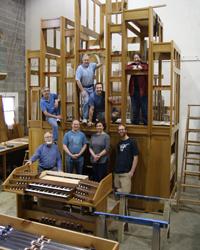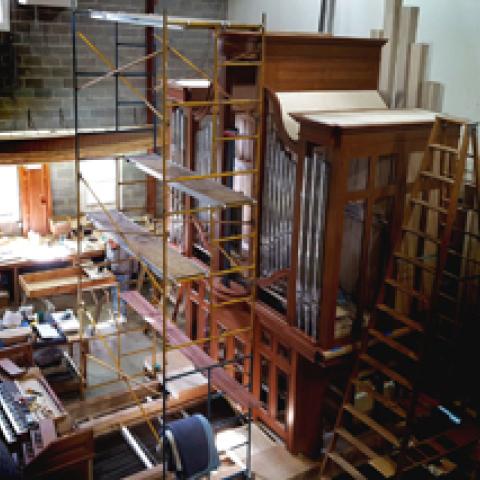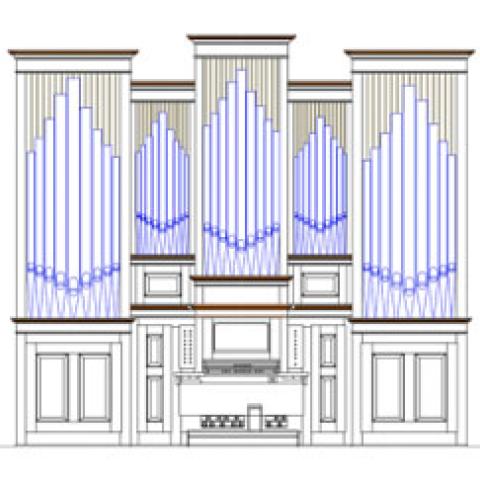
Noack Organ Company will host a free "Recital at the Organ Shop" on June 21 at 2 pm, to celebrate their latest opus (Opus 157) before it is installed at Christ Lutheran Church, Louisville, Kentucky.
Ian Watson will perform on the 21-stop, two-manual tracker organ. Watson is music director and organist at the First Parish in Lincoln, MA. He is currently principal keyboard player with the Handel and Haydn Society Orchestra and Artistic Director of Arcadia Players Baroque Orchestra.
The new organ for Christ Lutheran Church—Opus 157—will be the fifth installation of Noack organs in Louisville, Kentucky. It will be placed on the rear gallery. Due to the limited space, the manual divisions share a common windchest which occupies the full width of the main case. The Pedal division (three ranks derived in extension to six stops) is housed in its own enclosure at the rear. The console is detached in front of the main case allowing the organist to direct the choir without difficulty.
978/352-6266 — [email protected]
MANUAL I
Bourdon 16'
Diapason 8'
Chimney Flute 8'
Octave 4'
Twelfth 2 2/3'
Fifteenth 2'
Mixture IV 1 1/3'
Trumpet 8'
MANUAL II
Gedackt 8'
Dulciana 8'
Prestant 4'
Recorder 4'
Gemshorn 2'
Cornet III 2 2/3'
Mixture III 2'
PEDAL
Stopt Bass 16'
Diapason 8'
Stopt Bass (ext.) 8'
Diapason (ext.) 4'
Trombone 16'
Trombone (ext.) 8'




